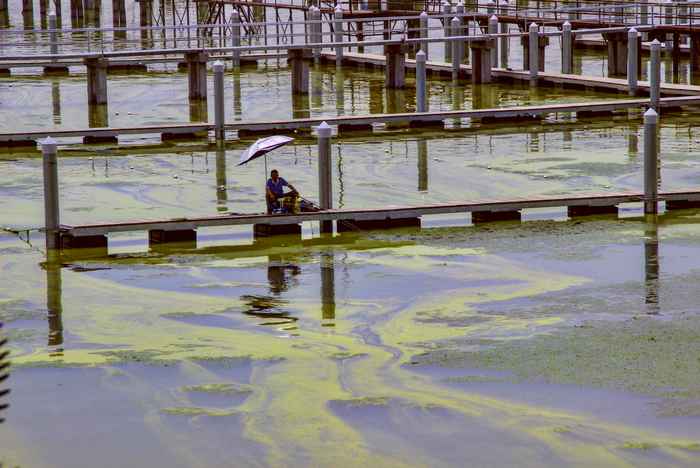Problems with cyanobacteria will worsen if CO2 concentrations continue to rise
20 February 2020

Each summer, the water quality of lakes and ponds is threatened by the growth of cyanobacteria, also known as blue-green algae. Cyanobacteria can produce a variety of toxins that are harmful to humans, other mammals and birds. In humans, these toxins may cause nausea, dizziness and liver damage. Intense cyanobacterial growth increases the amount of toxins in the water, which can negatively affect the use of lakes for recreation, drinking water or fisheries. Cyanobacterial growth already affects water quality across the globe, for example in Lake Erie (USA), Lake Taihu (China), Lake Victoria (Africa) and many European lakes.
‘We are actually fertilising the water worldwide with CO2’
CO2 (carbon dioxide) is an essential nutrient for algal growth. Just like plants, algae acquire CO2 through photosynthesis. The rising CO2 concentration in the atmosphere also increases CO2 concentrations in surface waters. Ecologist Jolanda Verspagen: ‘We are fertilising waters with CO2 on a global scale. This is beneficial for many algae, including toxic species.’
The new study, led by scientists from the University of Amsterdam, shows that one of the most common toxic cyanobacteria, Microcystis, can adapt exceptionally well to high CO2 concentrations. The cyanobacterium was cultured at low and high CO2 concentrations. The CO2 uptake rate of Microcystis was subsequently measured with an advanced laboratory instrument, known as a Membrane Inlet Mass Spectrometer (MIMS), which can detect very small changes in CO2 in response to algal photosynthesis. ‘This specific cyanobacterium is able to growth faster, because it can increase its CO2 uptake rate by a factor 5 at high CO2 concentrations,’ explains PhD student Jason Ji. ‘To our knowledge, this is the strongest CO2 response ever recorded! Other non-toxic algae, like green algae and diatoms, can adapt less well, and some of them even grow slower at high CO2 concentrations.’
Warning
The ability of toxic cyanobacteria to grow faster at high CO2 concentrations has far-reaching consequences for water quality. Model predictions by the research team show that the exceptional ability to adapt will further increase cyanobacterial growth at elevated CO2 concentrations, particularly in nutrient-rich waters. The researchers therefore warn that, if atmospheric CO2 concentrations continue to rise, problems with cyanobacteria will continue to worsen in the future.
Collaboration
The research was carried out at the Institute for Biodiversity and Ecosystems Dynamics (IBED) at the University of Amsterdam by Jason (Xing) Ji, Dr Jolanda Verspagen and Prof. Jef Huisman, in collaboration with the East China Normal University in Shanghai, Dr Dedmer Van de Waal of the Netherlands Institute of Ecology (NIOO-KNAW), and Dr Björn Rost of the Alfred Wegener Institute (AWI) in Bremerhaven, Germany. The research was supported by the Netherlands Organisation for Scientific Research (NWO), and two national Chinese grants.
Publication details
X. Ji, J. M. H. Verspagen, D. B. Van de Waal, B. Rost, J. Huisman. Phenotypic plasticity of carbon fixation stimulates cyanobacterial blooms at elevated CO2. Science Advances, 19 February 2020.